Part C of the MCCD is in two parts:
-
Part I – The disease or condition directly leading to death.
-
Part II – Other significant conditions which contributed to, but did not directly cause, or relate to the death.
Where PART C is completed correctly, the condition on the lowest completed line of part one will have caused (or created the conditions for) all of the conditions on the lines above it. This ‘initiating’ condition will usually be regarded as the ‘underlying cause of death’.
- The causes of death should be described succinctly. Currently conditions must be able to be coded under the WHO ICD-10 classification[1]. Whilst specific codes for CADASIL and CARASIL in the list below are not available in the WHO ICD-10, National Records for Scotland (NRS) are able to assign appropriate codes for these conditions at present. They are already included in WHO ICD-11 when it is used in the future.
- Accepted abbreviations on the MCCD as detailed in the CMO guidance are:
- HIV - human immunodeficiency virus infection
- AIDS - acquired immune deficiency syndrome
- COVID 19 Disease or SARS-CoV-2- Coronavirus disease or Severe Acute Respiratory Syndrome Coronavirus 2
- CREST - calcinosis, Raynaud phenomenon, oesophageal dysmotility, sclerodactyly, and telangiectasia syndrome
- CADASIL - cerebral autosomal dominant arteriopathy with subcortical infarcts and leukoencephalopathy syndrome
- CARASIL - cerebral autosomal recessive arteriopathy with subcortical infarcts and leukoencephalopathy syndrome
- SCID - severe combined immunodeficiency
- IgG – Immunoglobulin G
- IgA - Immunoglobulin A
- IgM - Immunoglobulin M
- Where the patient had more than one disease or condition that was compatible with the way in which he or she died, these can be written on the same line followed by ‘joint causes of death’ in brackets
- For Parts I and II, it is important to record (in the boxes on the right hand side of the form) the approximate time interval between the onset of each disease, injury, condition or event, and death. Do not just tick this box, as this information provides confirmation that the entries are in the correct order and may be essential for the accurate classification of the causes of death.
Although the MCCD has only four lines in part one for recording the sequence leading directly to death, in some cases there may be more than four steps to the sequence. This can be outlined by writing more than one condition on a line, indicating clearly that one condition is due to the next.
What not to record
The following causes of death must not be recorded on the MCCD as the sole cause of death:
Old age
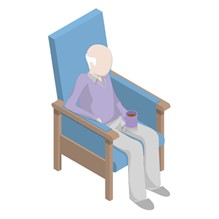 Old age cannot be stated as the sole cause of death for anyone unless the certifying doctor:
Old age cannot be stated as the sole cause of death for anyone unless the certifying doctor:
-
Has personally cared for the deceased over a long period (meaning years, or many months)
-
Has observed a gradual decline in the patient's general health and functioning
-
Is not aware of any identifiable disease or injury that contributed to the death
-
When the certifying doctor is certain that there is no other reason that the death should be reported to the Procurator Fiscal
-
If the patient is 80 years or older and all the conditions listed above are met.
Natural causes, terminal events, modes of dying, and other vague terms
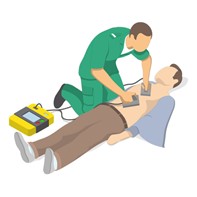 The term “natural causes” alone, with no specification of any disease on an MCCD, is not sufficient to allow a death to be registered. Similarly, terminal events or modes of dying such as cardiac or respiratory arrest, syncope or shock are not acceptable as the only cause of death.
The term “natural causes” alone, with no specification of any disease on an MCCD, is not sufficient to allow a death to be registered. Similarly, terminal events or modes of dying such as cardiac or respiratory arrest, syncope or shock are not acceptable as the only cause of death.
Without the necessary information to state to ‘the best of knowledge and belief’ what disease caused the patient’s death, it is unlikely that an MCCD can be completed.
Therefore it may be that in some cases the death will require to be reported to the Procurator Fiscal to ensure that the cause of death can be determined and for any sudden, suspicious, accidental or unexplained deaths to be investigated further.
Organ failure
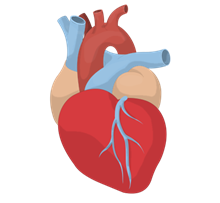 Deaths should not be certified as due to the failure of any organ or 'multi-organ failure', without specifying the disease or condition that led to the organ failure.
Deaths should not be certified as due to the failure of any organ or 'multi-organ failure', without specifying the disease or condition that led to the organ failure.
Special notes on specific situations
Healthcare associated infections
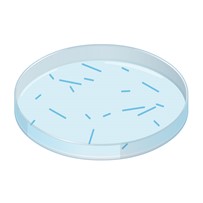 If a healthcare associated infection was part of the sequence leading to death, it should be recorded in Part I of the MCCD.
If a healthcare associated infection was part of the sequence leading to death, it should be recorded in Part I of the MCCD.
If a person dies with clostridium difficile either as a cause of death or as a condition contributing to the death, relatives must be provided with a clear explanation of the role played by the infection in the death.
Where infection follows treatment, including surgery, radiotherapy, antineoplastic, immunosuppressive, antibiotic or other drug treatment for another disease, then the treatment and the disease for which it was given should also be listed.
Neonatal deaths
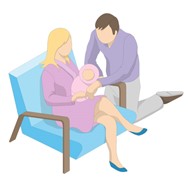 In cases of neonatal death, it can be important to parents that the name of the infant is stated on the MCCD. Some parents may not name their children immediately and may agree an alternative statement.
In cases of neonatal death, it can be important to parents that the name of the infant is stated on the MCCD. Some parents may not name their children immediately and may agree an alternative statement.
Neonatal deaths are manually scrutinised by coders in National Records of Scotland. It is important to also record the relevant maternal condition on the MCCD, although this will not be coded as the underlying cause of death.
Pneumonia
 In cases of pneumonia, the type of pneumonia should be specified as far as possible, and whether related to aspiration and the organism involved. The whole sequence of conditions and events leading up to the pneumonia should be included.
In cases of pneumonia, the type of pneumonia should be specified as far as possible, and whether related to aspiration and the organism involved. The whole sequence of conditions and events leading up to the pneumonia should be included.
If known, you should indicate whether the pneumonia was hospital or community acquired. If it was associated with mechanical ventilation or other specialist treatment, this should be clearly stated.